Philadelphia is teeming with pocket parks and under-the-radar gardens, unique spaces, and other hidden attractions that even long-time residents may not know. If you’re a visitor with time on your hands or a local looking to explore something off the beaten path, there are lots of hidden gems in Philadelphia. This list has some of our favorite spots we’ve discovered over the years and will help you get started in uncovering some of the city’s best kept secrets.
Highlights include…Don’t miss the chance to go behind the scenes at the Masonic Temple or to stroll the serene grounds of Shofuso. Take in the sights and tastes of the Southeast Asian Market, and sample the historic chocolate and candy recipes at Shane Confectionery. The skyline views from Bok Bar are incomparable.
Bartram’s Garden
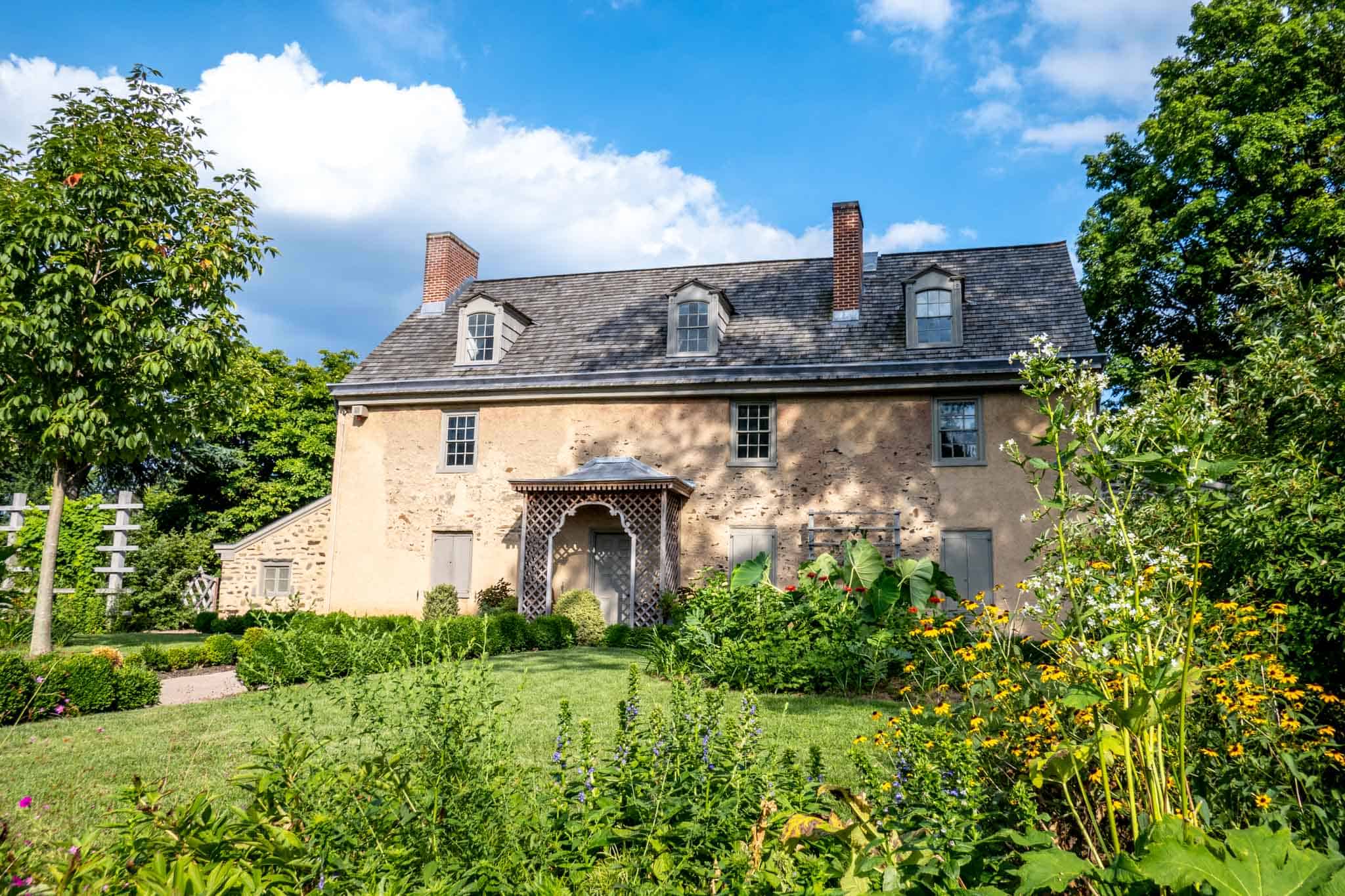
Bartram’s Garden is a natural retreat in southwest Philadelphia. We love wandering the River Trail to see wildflowers, plants, and trees whose history stretches back centuries.
The oldest botanical garden in North America, Bartram’s Garden was founded by John Bartram nearly 300 years ago. In his later life, he was the “King’s Botanist” for King George III in recognition of his knowledge and accomplishments. Many of the native plants on the grounds owe their cultivation to Bartram’s efforts.
Descriptions around the garden identify plants and explain which ones had medicinal properties or other uses in the colonies, so a visit here isn’t just pretty—it’s a bit of a history lesson for those who are interested. Binoculars, fishing rods, and tackle are available to borrow at the Visitor’s Center on Fridays and Saturdays. From mid-May to mid-October, there are kayaking and boating lessons on Saturdays, which make for a fun opportunity to get out on the Schuykill River.
The garden is free to visit. On-site parking is limited, which can be challenging on weekends or during events, but street parking is often available on 51st and 56th Streets.
Masonic Temple of Philadelphia
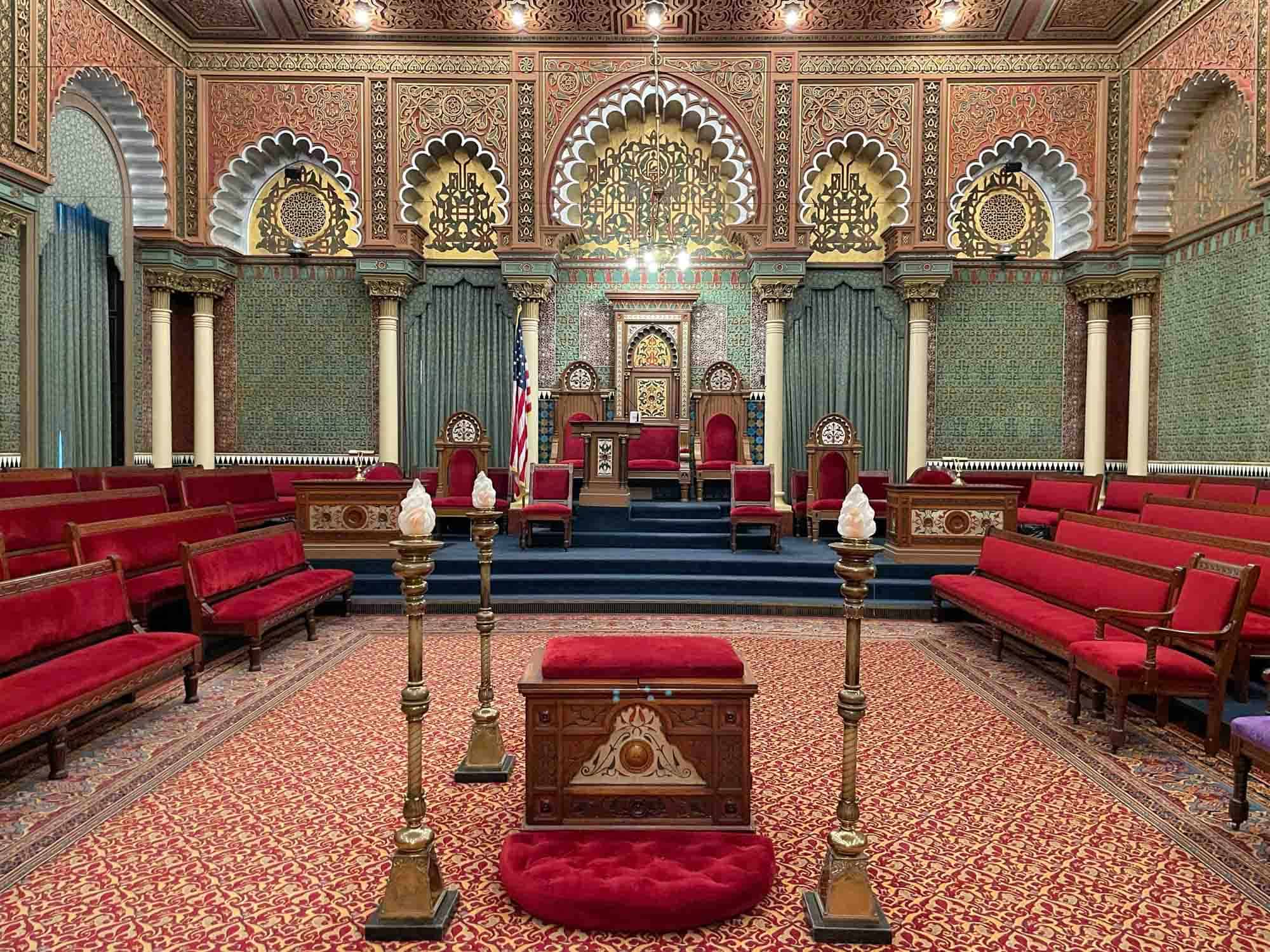
An architectural gem, The Masonic Temple of Philadelphia is a sumptuously decorative building just north of City Hall. It has hosted meetings for over 150 years and is now the meeting place for more than 15 local Freemason lodges.
The Masons are an enigmatic organization, and lots of conspiracy theories abound regarding their inner workings. Unfortunately, a tour of the Masonic Temple won’t shed any light on that—there is very little information shared about the fraternity, and almost all the content is about the building.
Visiting the temple on an hour-long guided tour gives you passage into several of its brightly colored, ornate meeting halls. You’ll see replicas of statues from Greece’s Parthenon and columns with Egyptian designs, among other unique things. We particularly enjoyed the Arabic calligraphy in Oriental Hall. Did we mention the 13-foot-tall Ben Franklin statue? Yes, the Philadelphia resident who was famously a Mason is memorialized here, too.
Zagar Mosaics
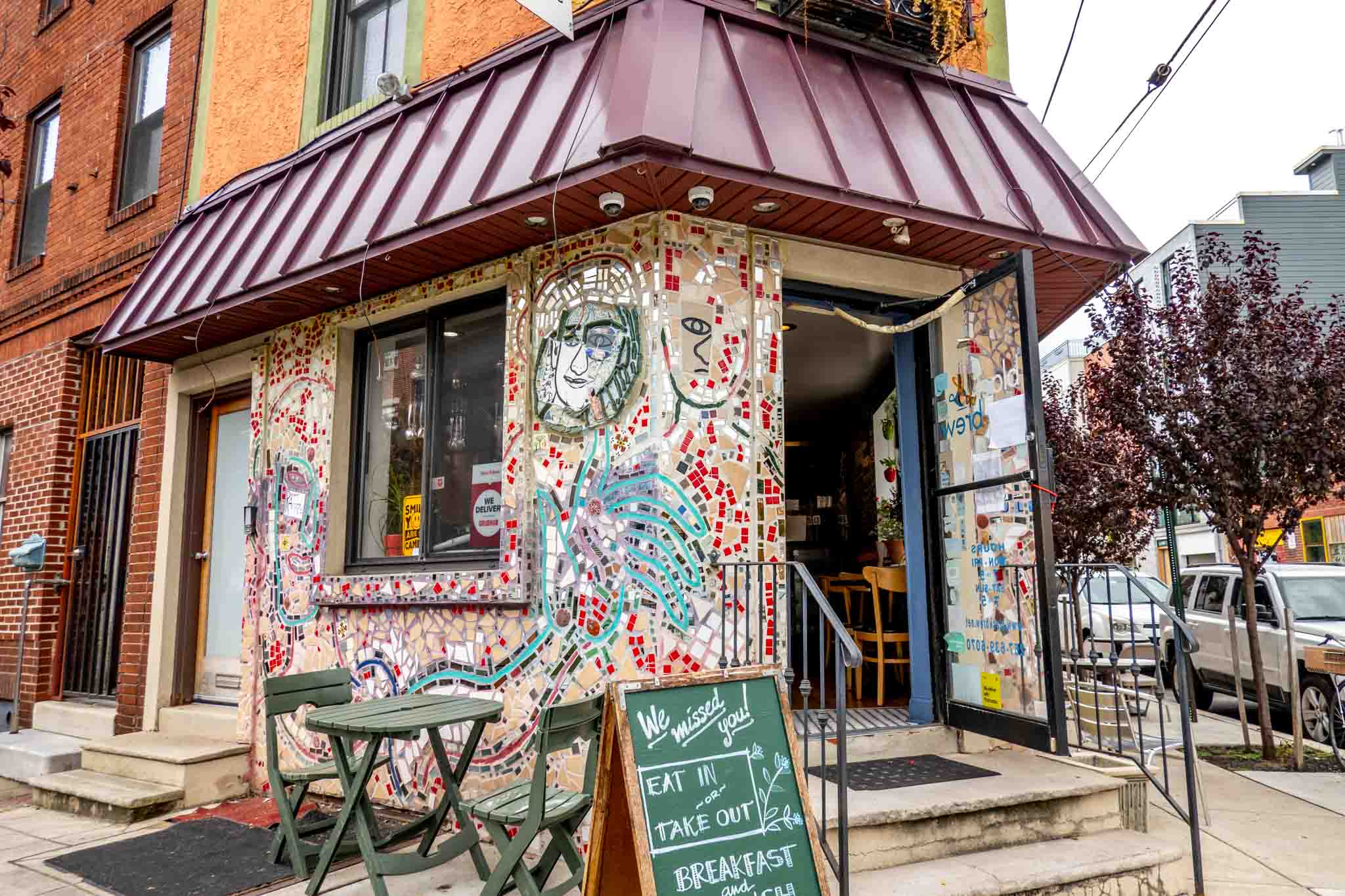
The Magic Gardens—a whimsical, artistic experience surrounded by mosaics and reclaimed objects—is one of the top attractions in the city. Its creator artist Isaiah Zagar is a prolific artist beyond his greatest known work, however.
One of our favorite things about driving around the city (especially in South Philly) is finding the unexpected Zagar mosaics. On a random street corner, gracing a storefront, on a wall beside a school—you never quite know where one of his distinctive pieces will turn up. They’re easily identifiable and never fail to make us smile because they’re always a surprise. This map shows where many are located so you can find them for yourself.
Pennsylvania Hospital Garden
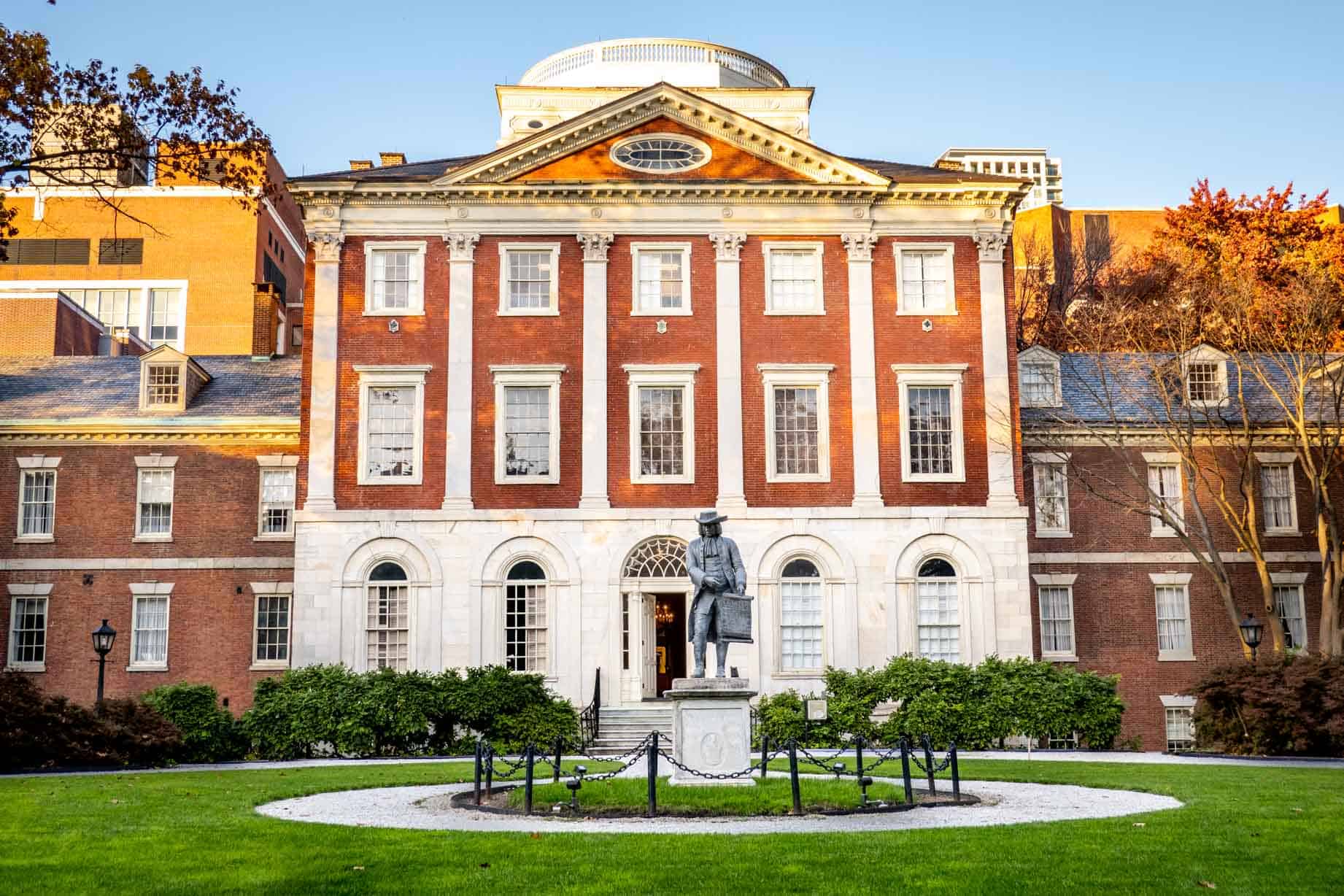
Pennsylvania Hospital was the first hospital in the United States, built in 1755 decades before the country even existed. Its Pine Building— located on Pine between 8th and 9th Street—is still in use today.
The back of the building features a gorgeous garden with azaleas, wisteria, and towering colorful trees that dates back to the hospital’s founding. In the center is a statue of William Penn that was provided to the hospital by Penn’s grandson. It’s free to visit and many people don’t know that it’s open to the public.
Shofuso Japanese Garden
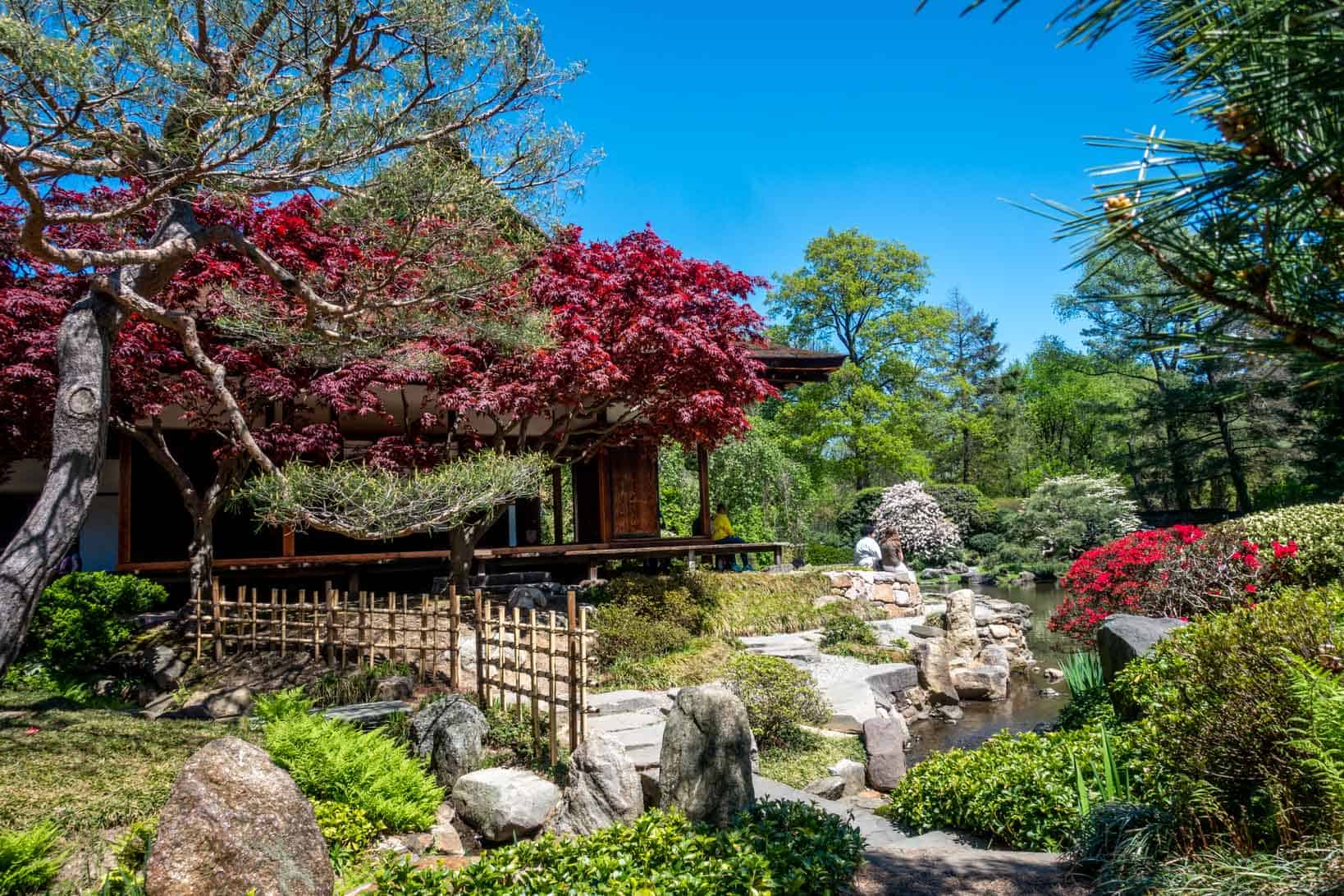
The Shofuso Japanese House and Garden is tucked away in Fairmount Park just a few miles from Center City. The Japanese house, heavenly garden, and koi pond are the definition of a hidden gem.
The site features a traditional-style Japanese house that visitors can walk through to see the rooms as well as a collection of murals on display that were inspired by the waterfall on the grounds. Outside, there is ample space to explore the sections of the garden and the pond. March is a particularly good time to visit when the cherry blossoms on the property and right outside the walls are blooming–it’s one of our favorite places to see them.
James G. Kaskey Memorial Park
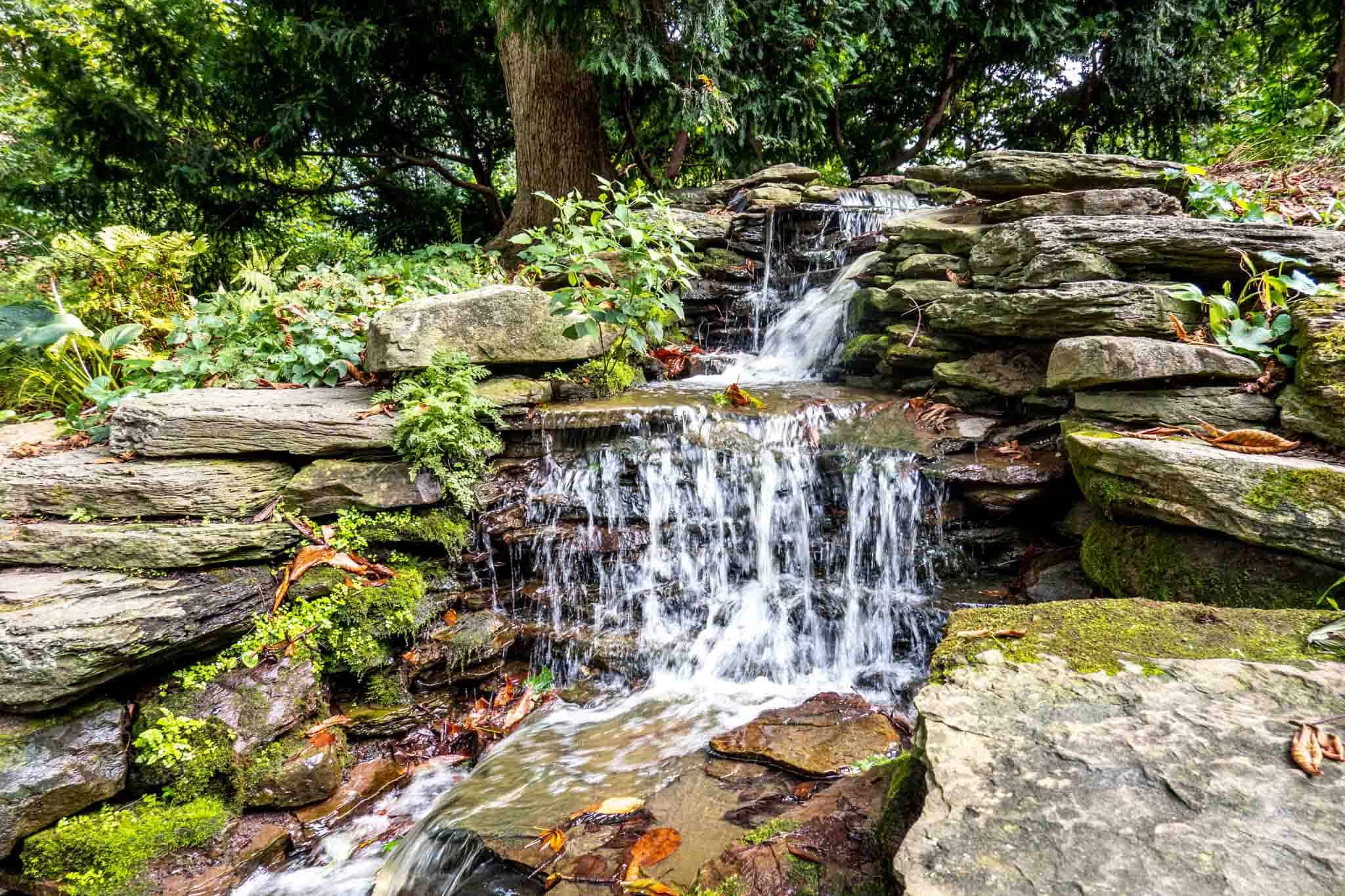
The James G. Kaskey Memorial Park is an ecological oasis on the campus of the University of Pennsylvania. If you didn’t know to look for it, it would be very easy to pass by this nearly secret spot. The cascading waterfall and singing birds almost make you forget about the busy city barely a block away.
The quiet space, which has been here in various forms since 1897, is surrounded by research labs and buildings of the Biology Department. Hence the name of the lovely pond at the park’s center—the BioPond. Life sciences and art students use the area as part of their studies and plenty of other people come to enjoy the turtles, koi, and variety of wildflowers.
John F. Collins Park
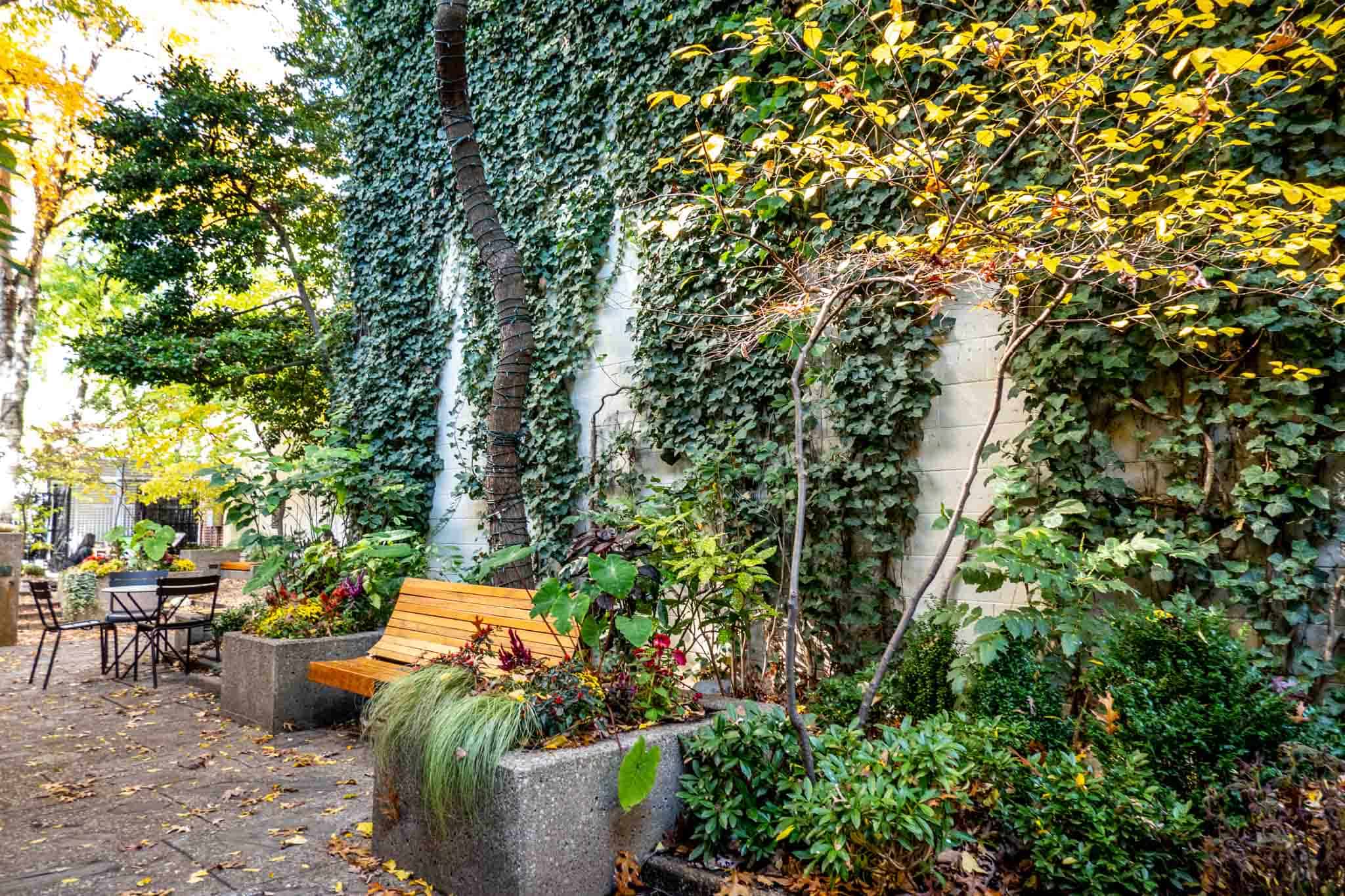
Ornate gates mark the entrance to the charming John F. Collins Park. This pocket park just off 17th Street occupies a narrow space between Chestnut and Ranstead.
Its ivy-covered walls, wooden benches, and tables are welcoming for the lunch crowd or anyone looking to rest their feet for a moment in Center City. Native trees shade the space, and a cascading fountain of concrete pillars is at its center.
Bok Bar

There are few better places to appreciate the skyline than from Bok Bar in South Philly. This seasonal bar (April to October) occupies a space in the former Bok Vocational High School, which opened in 1938. Though the school closed years ago, many of its architectural details have been preserved, making it one of the most unique places in the city for a drink with a view and a perfect date night experience.
Food vendors change monthly at Bok and regularly include some of the city’s best chefs (we’ve had food from Kalaya here more than once). They also serve a selection of beer, wine, and cocktails. There are frequent special events, including drag brunches, rooftop yoga, salsa dancing nights, and more.
Headhouse Farmers Market

The Headhouse Farmers Market is one of the best places around for produce, flowers, and artisanal food and is one of the best farmers markets in the city. Every Sunday, the market shed fills with vendors from around the region selling their wares in the building whose history dates to 1745. Come hungry and ready to shop.
Some of our favorite vendors include Birchrun Hills for cheese, empanadas from Jezabel’s cafe, and produce from Beechwood Orchards. Some of the vendors accept preorders, so check ahead of time if there’s something you’re particularly interested in.
The Rosenbach
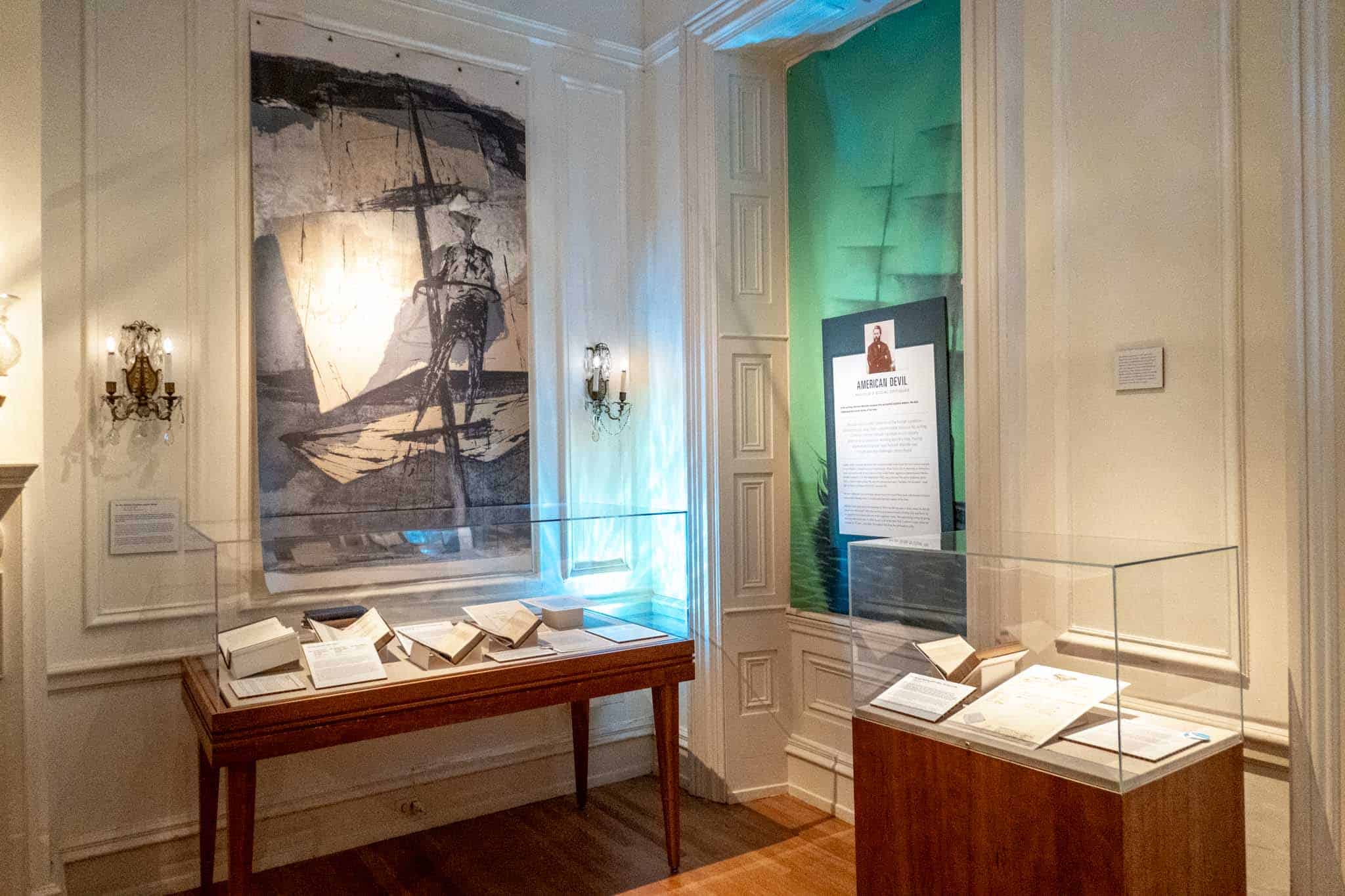
The Rosenbach Museum & Library is a book lover’s dream. This 19th-century townhouse in Rittenhouse features a remarkable collection of rare manuscripts and books. From Lewis Carroll’s own copy of Alice in Wonderland to a handwritten manuscript for Ulysses by James Joyce, the museum is filled with treasures.
Beyond the books, there are other special items to see. Several rooms are set up as they might have been when the Rosenbach brothers lived here. They showcase ancient statues, artwork, and artifacts collected from around the world. You’ll see everything from a jewelry chest that belonged to King Charles II to an unusual clock made by Marie Antoinette’s clock maker.
Don’t miss the charming garden outside. It’s a lovely place to linger.
Cliveden

In 1777, the Cliveden estate cemented its place in history when it became the site of the Battle of Germantown, the only Revolutionary War battle to happen in Philadelphia.
A guided tour of Cliveden gives an interesting look at the history of the house and the seven generations of the Chew family that lived here. Themes and highlights of the tour change with exhibits like “The Women of Cliveden” and “The Turmoil of Transition.” Our tour was a small group, so it was easy to ask questions and elaborate of different parts of the story. Throughout the year, there are special presentations about a variety of topics like citizenship, Blacks during the Revolution, and stories uncovered in the Chew family papers. You can also walk around the park-like grounds for free or attend one of the regular yoga classes.
On the first Saturday of October every year, Cliveden hosts the Revolutionary Germantown Festival, which features a battle reenactment on the lawn and other events. Many of the sites of Historic Germantown are also open and free to visit on that day.
Southeast Asian Market

On weekends from April through October, FDR Park buzzes with the sights and smells of the Southeast Asian Market. From humble beginnings in the 1980s, this amazing market has grown to over 70 vendors.
As you walk around, you’ll find beef skewers (our favorites), Cambodian stuffed chicken wings, Thai noodle dishes, and much more. There is even a lemongrass chicken cheesesteak at the Sahbyy Food’s stand, which is not to be missed.
Come early to miss some of the lines and bring a picnic blanket or folding chair to make yourself comfortable for one of the most delicious lunches around.
Cedar Park Houses
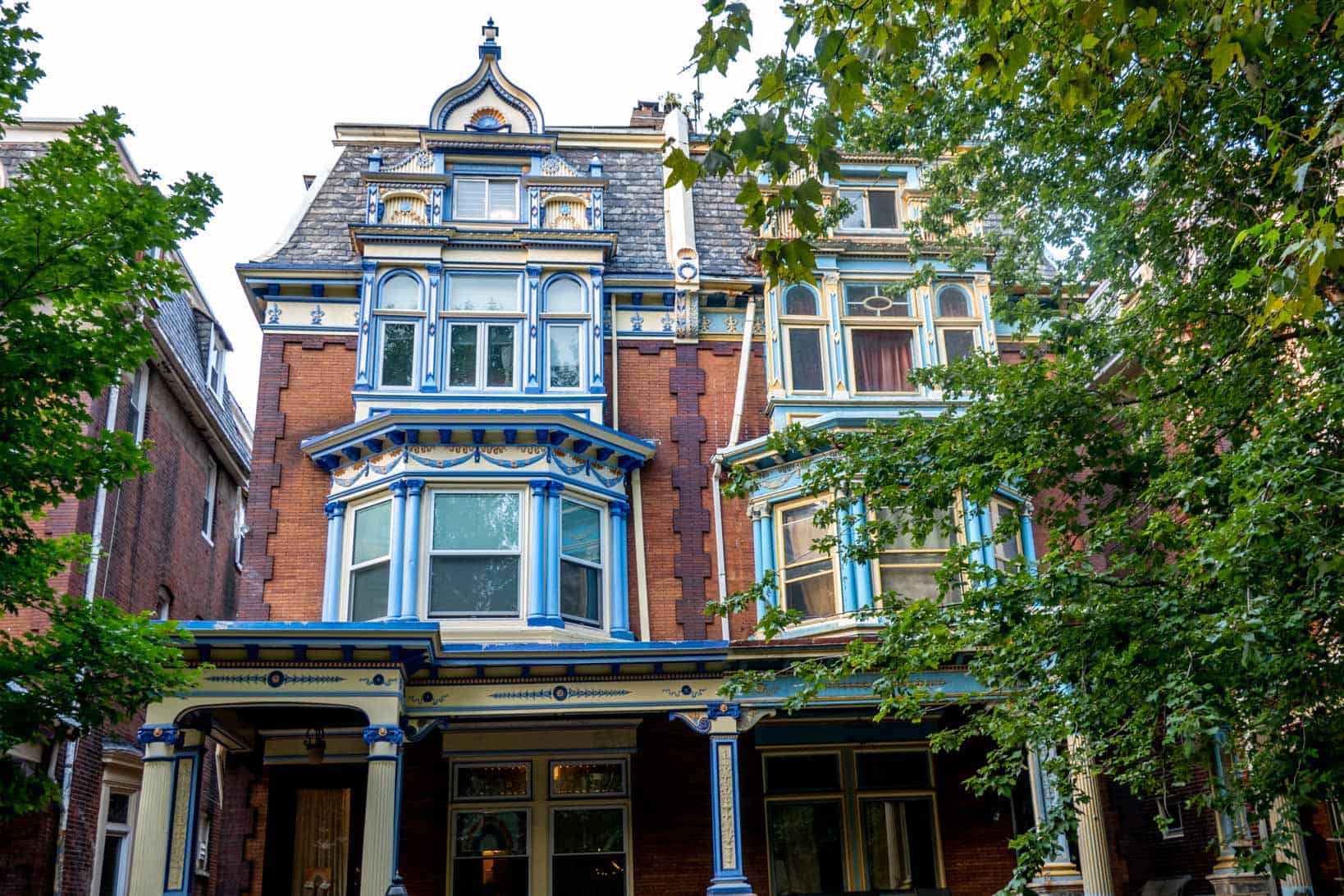
Some of the prettiest houses in the city are in the Spruce Hill and Cedar Park neighborhoods at the edge of University City. Filled with brightly painted Queen Anne Victorian twins and homes with other unique features, the neighborhoods are a delight for architecture lovers. Grab a drink or snack from Green Line Cafe to enjoy while you wander.
Shane Confectionery
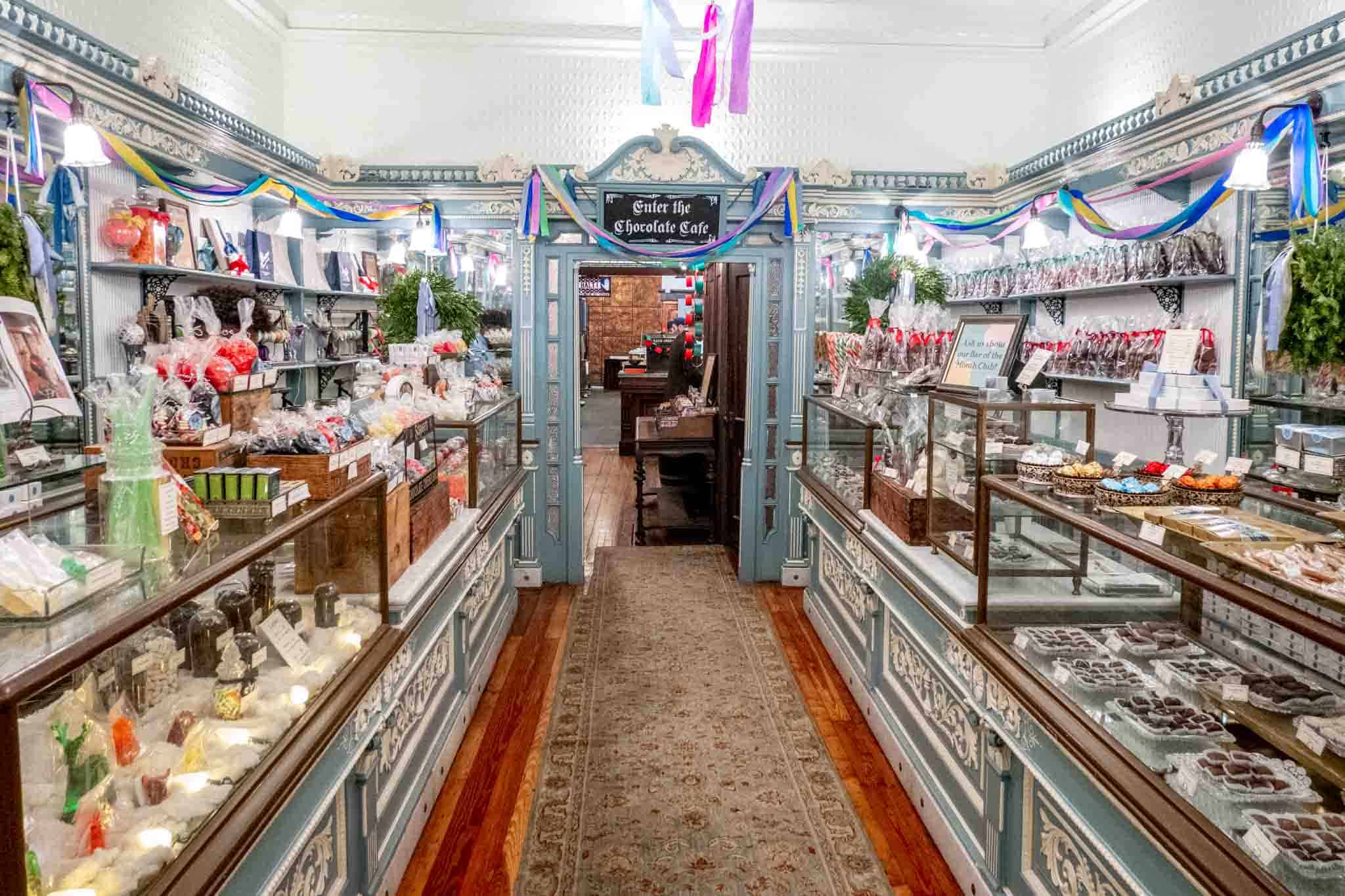
A confectionery has occupied the space at Letitia and Market for over 150 years, making it America’s oldest candy shop. Shane Confectionery pays homage to that history in its offerings of old-fashioned candy and chocolate alongside modern products.
Shane is known for its creations like the Pennsylvania Dutch Christmas gift called Clear Toy Candy, its buttercreams based on a 100-year-old recipe, and the products they make with honey from the beehives they keep on their store roof. The hand-crafted treats are worth the trip. If you stop in, don’t miss the variety of drinking chocolates available in the café in the back. It’s hard to go wrong with any choice here, but we particularly like their caramel truffles.
It’s high on our list to take one of the regular tours Shane offers. On most Saturday and Sunday afternoons, groups visit the kitchen and Chocolate Works production spaces to learn about the historic recipes and taste Shane’s best products.
View of Independence Mall
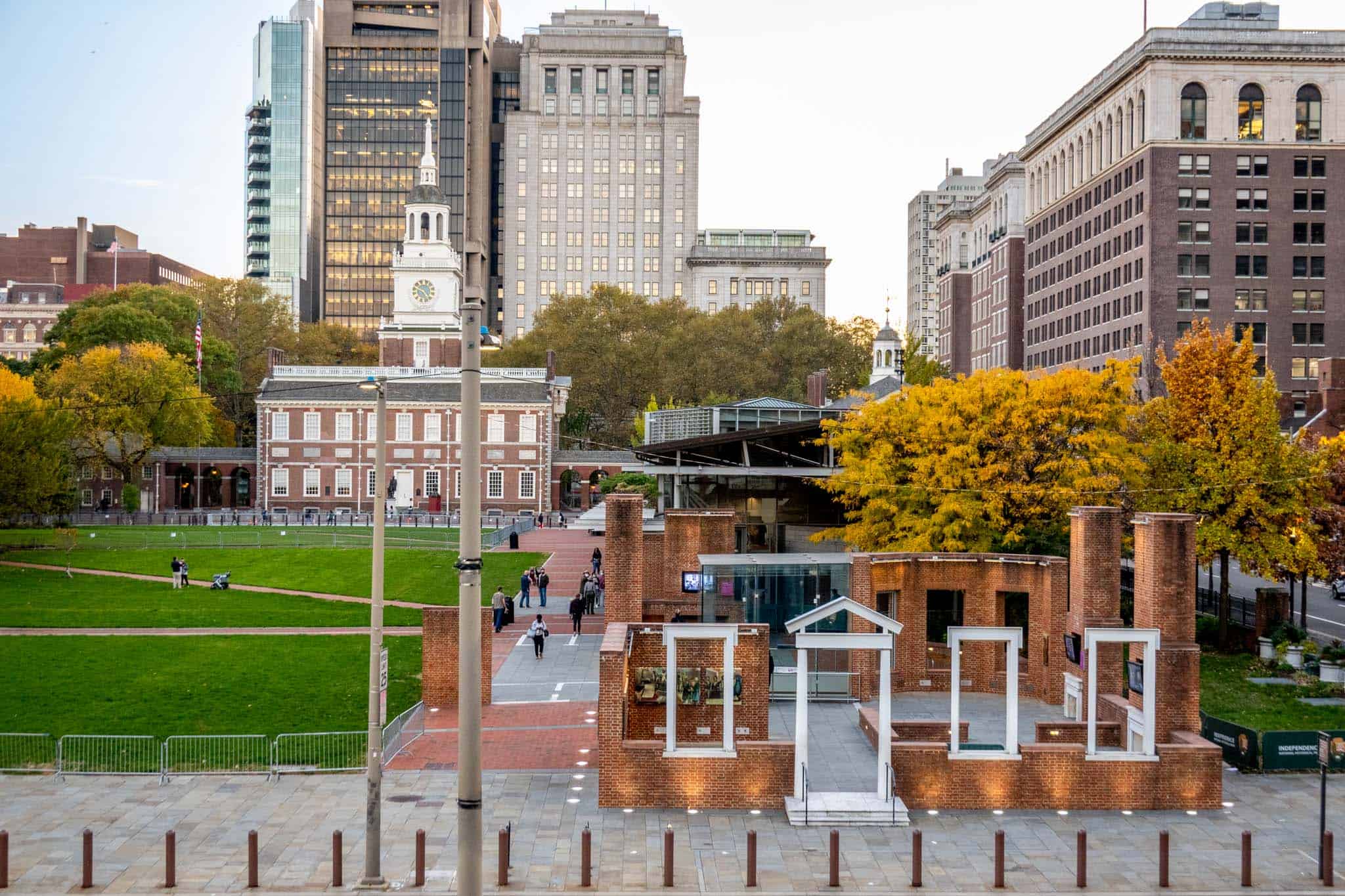
Independence Visitor Center offers lots of information about things to do in the city. You can get pamphlets about tours, tickets to visit Independence Hall, and there’s a café to take a break at. Our favorite thing about this spot, though, is the view.
From the deck, you can see Independence Mall, which includes many of the most famous places in Old City—Independence Hall, the Liberty Bell, and the President’s House. Occasional pop-up events turn the terrace into a beer garden with one of the best atmospheres in the city.
Rail Park
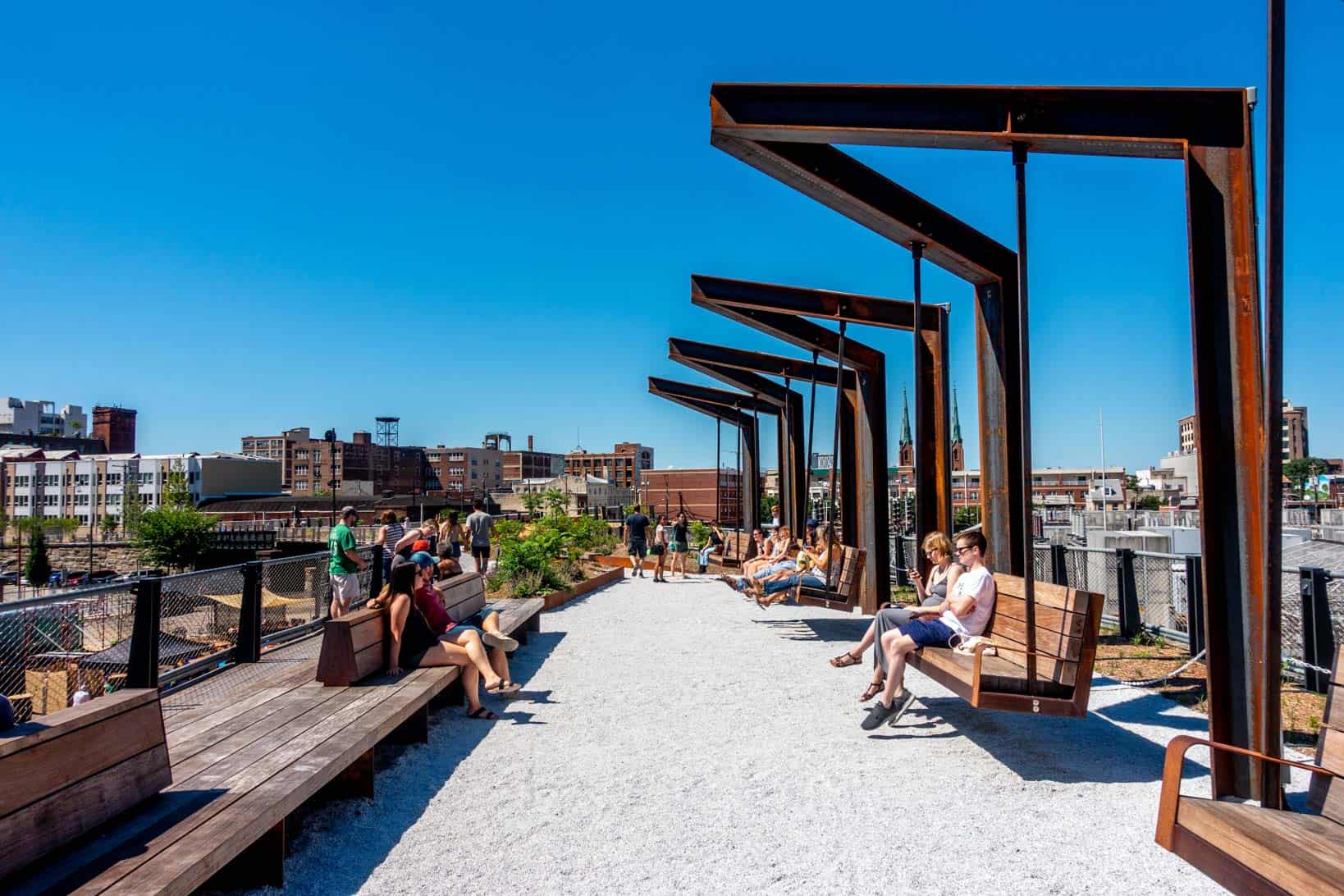
A section of overgrown, unused rail lines has been revitalized into Rail Park. The free, pet-friendly elevated space has native plants and trees, walking paths, and even swings above Center City.
The quarter-mile stretch of park will ultimately be three miles long, which will make the Rail Park twice the length of New York’s famous High Line. The park is free and open every day. Entrances are at 1300 Noble Street and Callowhill Street between 11th and 12th Streets.
Fountain Street Steps

If you’ve ever walked near the river in Manayunk, you’ve probably seen the Fountain Street Steps. If you haven’t, you’re missing out.
Properly known as “Water Under the Bridge,” this stunning work by mosaic artist Beth Clevenstine and muralist Paul Santoleri has 70 steps adorned in colored glass that combine to look like a waterfall. In a city full of great public art, the steps are truly a standout.
Germantown White House
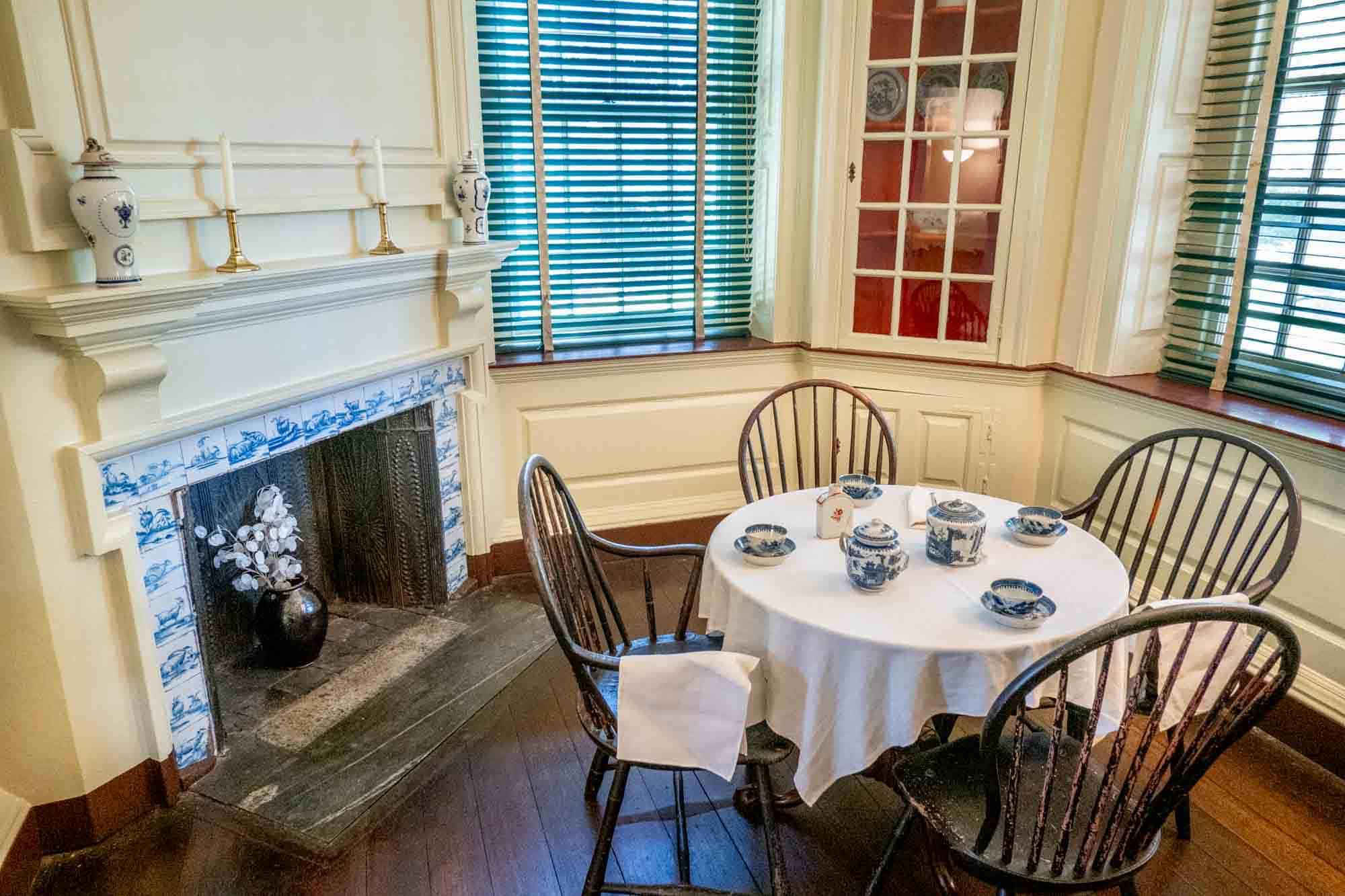
Visiting the Germantown White House is a step back in time to the years when Philadelphia was the US capital. Dating from 1772, the home on what is now Germantown Avenue is more formally known as the Deshler-Morris House after two of its previous owners.
During the 1793 yellow fever pandemic, George Washington and his family fled the city to the Germantown countryside where they took up residence. The president liked it so much that he returned the following year for vacation and even held meetings here with his Cabinet.
The home is decorated in 18th-century style, and guided tours show you Washington’s workspace and the family’s accommodation as well as providing background about the roughly 20 enslaved people the Washingtons brought with them. Unfortunately, the property is truly a “hidden gem” for the moment because it is closed for renovations. Hopefully reopening will be on the horizon this summer.
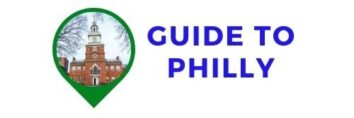
I lived in Philly all these years and never heard of these places. I love it 🥰. More places to explore this summer.
I’m glad we could add to your list! It’s always fun to discover something new 🙂